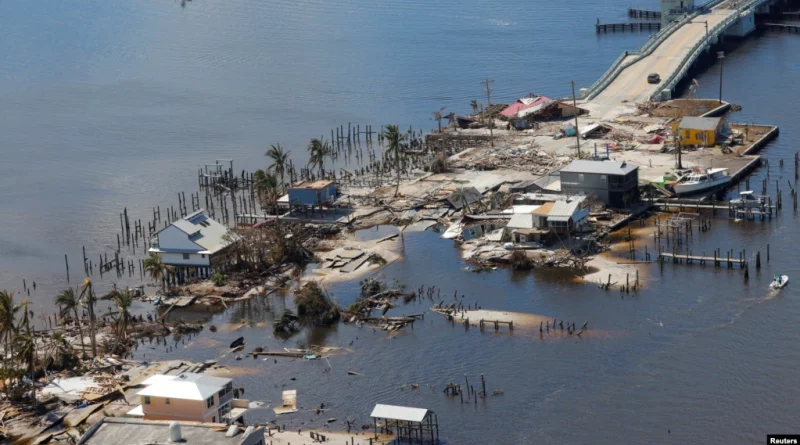Hurricane Ian cleanup begins in southeastern U.S.
Hurricane Ian cleanup begins in southeastern U.S.
Florida, North Carolina and South Carolina began a major cleanup Saturday of the devastating aftermath of Hurricane Ian, one of the worst storms ever to hit the mainland United States, causing tens of billions of dollars in damage and killing scores of people.
New images taken by the National Oceanic and Atmospheric Administration (NOAA) show that several beach cottages and a motel building on the coast of Sanibel Island in Florida were swept away by the storm surge caused by Ian.
According to the National Hurricane Center, “Ian,” now a post-tropical cyclone, continues to weaken but is forecast to bring bad weather to the Central Appalachian and Mid-Atlantic regions of southwest Virginia and southern West Virginia.
“Record river flooding will continue in central Florida next week. Flash flooding is possible in the central Appalachians and southern Mid-Atlantic region this weekend, and minor flooding is expected in coastal areas of the Carolinas,” the center said in a statement.
South Carolina Governor Henry McMaster told reporters Saturday that there were no storm-related deaths in the state and that most power had been restored.
The storm hit Florida’s Gulf Coast Wednesday, turning beach towns into disaster areas. On Friday, it hit the waterfront of Georgetown, South Carolina, just north of the historic city of Charleston.
Roads were flooded and blocked by trees, and several levees were damaged.
At 1 p.m. Saturday, about 1.5 million homes and businesses in the Carolinas, Virginia and Florida were without power. About 1.2 million such outages occurred in Florida.
The number of casualties and the cost of repairs are not yet known, but the extent of the damage caused by the hurricane in Florida is slowly becoming clearer.
At least 35 people in Lee County, Florida alone were killed by the elements, the county sheriff’s office said in a Facebook post Saturday morning. Many of the dead in Florida were elderly people, including a 92-year-old man, the Florida Department of Law Enforcement said earlier.
In North Carolina, four people died in storm-related incidents, state officials said Saturday.
Thousands of people in Florida are still missing, officials said, but many are probably in shelters or without power.
“We’ve been hit more by the flooding than by the wind,” Governor Ron DeSantis said Saturday. – That will require a lot of flood insurance claims to be filed.”
According to U.S. real estate data company CoreLogic, insurers are braced for $28 billion to $47 billion in damage from Hurricane Ian, which could be the largest amount of damage since Hurricane Andrew in 1992.
President Joe Biden approved a disaster declaration providing federal resources to counties affected by the hurricane. The president said that “Ian” would “likely be among the worst (storms) in the nation’s history.” On Saturday, the president declared a state of emergency in North Carolina.
